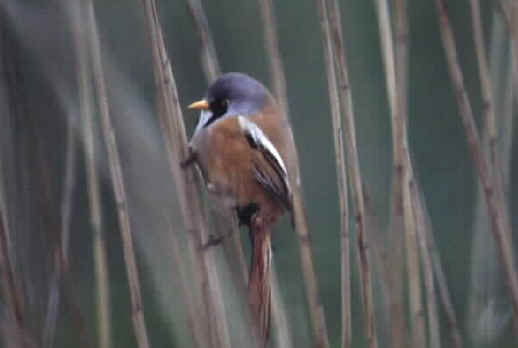Killing Babies
(provided by my dear friend and teacher Ed Willems)
--------------------------------------------------------------
A couple killed a number of their babies. Infanticide is a scary problem.
But, the parents lived in a larger social and physical context, so let me
share that context with you. An ornithologist with a European zoo wished
to add a small, rare bird called the bearded tit (sometimes called the
reedling) to the zoo's collection. Noting that other attempts to keep the
bird in captivity had failed, he devoted a great deal of time and effort to
summarizing what was known about the tit's habitat and lifestyle. Armed
with all this information, including many photos, the ornithologist built
an extensive setting for the tits in his zoo, being careful to include
exactly the right proportions and distributions of shrubs, trees, grasses,
rocks, arrangements for feeding, nesting materials, water, and lighting.
After the designed environment satisfied him, he introduced a male and
female to it. They seemed dazzled. They ate, sang, drank, flitted about,
groomed, mated, built an appropriate nest, laid eggs, hatched babies, and
fed them. The ornithologist had designed an environment whose habitability
the bearded tits enjoyed thoroughly.
Within a day or two, he came to check the tits, only to find the babies
lying on the ground, dead. Since the parents were still so clearly
enjoying themselves, he assumed that some accident or illness had befallen
the infants, and he waited for the reproductive cycle to recur. It did.
When a new brood was hatched, the ornithologist observed carefully and
found, to his dismay, after a period of time, that the parents pushed the
babies out of the nest, onto the ground, where they died. This cycle,
beginning with mating and ending with dead babies, repeated itself over and
over. Parents with deep psychosis, right?
The ornithologist tried modifications, but none stopped the infanticide.
In desperation, he and his students went back out to observe tits in the
wild. After many hours of observation, he noted three clear patterns of
behavior. First, during most of the daylight hours, the parent tits were
almost frantically active at finding and bringing food for the infants.
Second, the infants, with whose food demands the parents could hardly keep
pace, spent the same hours with their mouths open, crying for food. The
third pattern was that any inanimate object, whether eggshell, leaf, twig,
or beetle shell, was quickly shoved out of the nest by the parents.
With these observations in hand, the ornithologist went back to watch his
captive tits, and what he found astounded him because of its subtlety and
clarity. During the short time a new brood of infants lived, the parents
spent only brief periods feeding them by racing between the nest and the
food supply, which the ornithologist had supplied in abundance. After a
short period of such feeding, the infants, apparently satiated, feel
asleep. The first time the infants slept for any length of time during
daylight hours, the parents shoved them out of the nest--two inanimate
objects, after all. When he made the food supply less abundant and less
accessible and thereby made the parents work much longer and harder to find
food, the infants spent more daylight time awake, demanding food, and the
tits then produced many families and cared for them to maturity.
Infanticide is a problem, but the story points to some interesting features
of the ways in which we look at behavior and diagnose it. Diagnosing is a
process that begins with careful scrutiny of a set of indicators and data
and ends with a judgment, a statement, regarding the events to which those
indicators point. In psychology and psychiatry, judgments of what is wrong
are often highly constrained by the values we hold and by prior theoretical
commitments that lead us to look for the underlying problem--the real
problem--inside the target person. It is very important to recognize this
tradition because diagnostic judgments usually carry with them both
implicit and explicit strategies of intervention. The bearded-tit story
raises some fundamental questions about our uses of indicators, the process
of diagnosing, and the targets of intervention.
After he had confirmed his suspicion that the parent tits were killing
their babies, the ornithologist could have followed the example provided by
diagnosticians of human affairs. That is, he could have assumed that the
mainsprings of the parents' actions resided inside their skins, and he
could have diagnosed them as crazy or sick and in need of some form of
help, perhaps residential treatment and psychotherapy. Instead, he used a
series of careful observations to study the organism-environment system and
to converge on a contextual, socially situated diagnosis of the problem.
Then, he engaged in a social-contextual course of remedial action that
makes great sense in retrospect; that is, he intervened at the level of his
own actions, or with the accessibility of the food supply.

